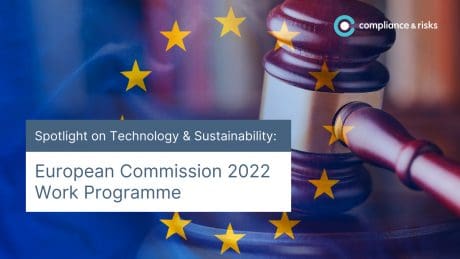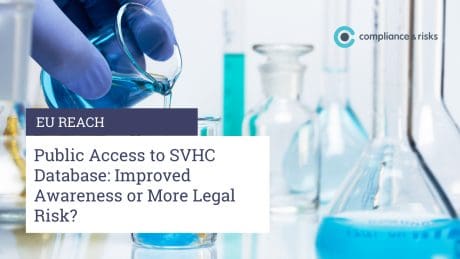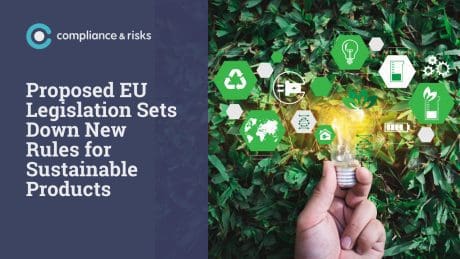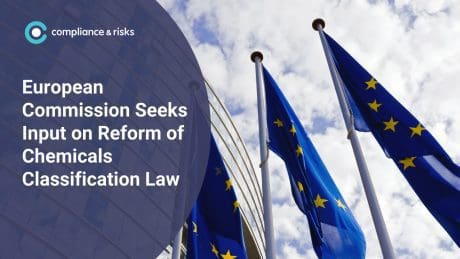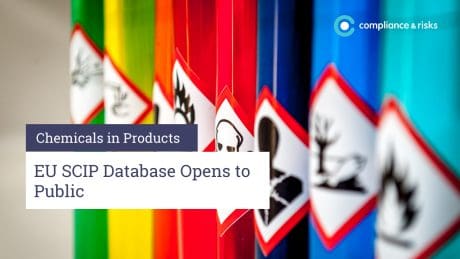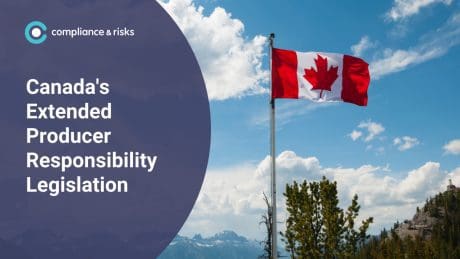
Long Anticipated Draft Aims to Regulate All Packaging in Spain

 The draft Royal Decree on Packaging and Packaging Waste (‘the Draft’) was released on 28 September 2021 for public comment ending 23 October 2021. The extensive draft is likely to contain the most circular economy measures for packaging in a single text worldwide.
The draft Royal Decree on Packaging and Packaging Waste (‘the Draft’) was released on 28 September 2021 for public comment ending 23 October 2021. The extensive draft is likely to contain the most circular economy measures for packaging in a single text worldwide.
With 40,000 words, the proposed text is almost 6 times as long as the 1997 Packaging Decree which it would replace. The Draft follows a pre-consultation in March 2020, and is aligned with the yet-to-be adopted draft Law on Waste and Contaminated Soils.
The Draft Packaging Decree aims to transpose the CEP amended (2018/852) EU Packaging Directive, to increase the volume of waste packaging recycled and to tackle free-riding, an ongoing problem in Spain which affects all waste streams subject to EPR.
Its provisions go beyond those explicitly required by the CEP, for example by introducing minimum recycled content targets for all plastic packaging and linking those on plastic to substantial eco-modulation incentives, introducing various informational requirements to ensure better consumer information and tackle free-riding, newly subjecting commercial and industrial packaging to EPR, and applying reuse quotas to it (reuse quotas are also applied to beverage packaging).
The Draft’s Impact Assessment does not foresee additional public or consumer spending, nor significant negative impacts for industry. New labeling and information requirements are expected to be the most onerous and to affect around 15,000 companies. Exemptions for small producers are not foreseen.
Below is a summary of the key measures proposed by the Draft grouped under various topics.
Producer definition and registration: new register for all producers, online marketplaces considered producers
Obligated ‘packers’ (fillers) include:
- Distance sellers: They cannot register directly and must appoint an authorized representative (ARs) based in Spain. If an AR is not appointed, the EU based intra-community importer or acquirer is obligated (Art. 17)
- Online marketplaces: The product owner (seller) as well as the ecommerce platform will be considered as ‘packer’ of primary and secondary packaging of packaged goods traded within Spain. For packaged goods from sellers established outside of Spain, ‘the e-commerce platform will act the packer’ (Art 3. e)
- A distributor owning a brand (distribution brand) is considered ‘packer’ of branded goods when the packer cannot be identified (Art 3. e)
- Stores that supply service packaging to end users are considered ‘packer’
Retailers and distributors including distance sellers may not market packaged products from un-registered producers (Art. 30).
A packaging producer register will be added to the Product Producers Registry (the register currently only holds data from producers of plastic carrier bags and tires). Packers/fillers of all packaging types will have to register within 3 months from the enforcement date of the Decree and present a certificate of individual or collective compliance (Art. 15).
Informational requirements: Display of registration number and recycling fees, marking, eco-design documentation
The producer registration numbers must be shown on ‘invoices and any other documentation that accompanies the commercial transactions’ of packaged products: For household packaging, the registration number must be shown from POM ‘up to the point of sale to consumers’ [but not the retail invoice, though this is ambiguous]; for industrial packaging, from the POM stage to the sale to the end-user (Art. 15.3).
Producers complying through a PRO must show recycling fees separately on invoices. The fee is to be shown ‘product by product’, unless the recycling fee does not exceed 1% of the final product price, in which case the total amount may be shown (Art. 23.5). [The obligation applies only to the producer at the POM stage, not other entities in the distribution chain].
Household packaging must be marked to indicate:
- The waste fraction with which it should be disposed of. This should be indicated for each separable component [a specific sorting label is not mentioned]
- The symbol of the associated DRS and/or PRO, ‘where appropriate’ [obligation ambiguous]
- Its reusable or compostable characteristics (Art. 13.4)
In addition, any packaging may be marked with the:
- Percentage of packaging material ‘available for quality recycling’ (Art. 13.2) if this is certified by an accredited 3rd party*
- Percentage of recycled material contained (Art. 13.2) if this is certified by an accredited 3rd party*
- Material identification markings of Commission Decision 97/129/EC
*Intra-community manufacturers and importers (or acquirers) of packaging or packaged products must keep documentation and information available for evaluation and verification of compliance with the essential and other eco-design requirements (minimum recycled content rates, recyclability, reusability, etc.) (Art. 12.3).
Marking containers with brands or logos that may mislead consumers about recyclability will incur penalties.
Eco-design: Minimum post-consumer recycled content (PCR) targets – not only for beverage bottles
Recycled content requirements are proposed to apply to:
- Beverage bottles – in line with the SUPD’s Art. 6 – from 2025: 25%, calculated as the average of all PET beverage bottles POM
- All plastic packaging from 2030: 30%, calculated as the average of all plastic packaging POM (extending beyond the SUPD)
- Selected plastic packaging from 2030:
-
- 35% for plastic jars, carafes and similar containers of up to 5L, including their caps and lids
- 15% for cans, jars, tubs, trays, baskets and other similar plastic items
- 25% for plastic films used in primary packaging applications, including bagging, liners, peel caps, or wrappers
- 50% for plastic films used in secondary packaging, such as shrink wrap, liners, sacks, bubble wrap and envelopes
- 60% for wholesale pallets, boxes and storage containers and other similar plastic items (Art. 11)
-
Modulated recycling fees: Substantial subsidies for recycled plastics if PCR targets exceeded; penalties for disruptive packaging
PROs will be required to modulate recycling fees through high-amplitude bonuses or penalties, depending on whether design criteria (defined in Annex VIII) are met.
- Bonuses (discounts):
- Discounts of EUR 50 (PET) to EUR 550 (PS) per tonne of PCR* must be awarded to plastic packaging that exceeds minimum PCR requirements by at least 10%
* EUR/ton discount of recycled plastic used: PET – EUR 50 / ton; LDPE – EUR 400; HDPE (rigid) and PP – EUR 450; HDPE (flexible) – EUR 200; PS and EPS – EUR 550 - A minimum discount of 10% is to be granted to packaging (and components) labeled with the percentage of material ‘available for quality recycling’
- Discounts of EUR 50 (PET) to EUR 550 (PS) per tonne of PCR* must be awarded to plastic packaging that exceeds minimum PCR requirements by at least 10%
- Penalties are set as a percentage of the base recycling fee, for example:
- +50% for paper and cardboard printed with inks containing added mineral oils
- +100% for opaque PET (mineral load> 4%) in bottles, jars and rigid plastic
Targets for separate collection: Distinguished for household, industrial and commercial packaging
The Draft stipulates recycling targets (in Art. 10) that are aligned with those of the EU Packaging Directive. They must be met only on the national level. In addition, the draft Decree proposes separate collection targets for all packaging: These are to be met by PROs on a state and region level in 2035, 2030 and 2035 and are set as follows:
- Overall separate collection targets apply to:
-
- Household packaging: 65% in 2025, 75% in 2030 and 85% in 2035 (Art. 29.2)
- At nominally 10% higher rates for commercial packaging (Art. 36.2) and for industrial packaging (Art. 42.2)
-
- Material specific separate collection targets are set for household packaging only. The rates are a nominal 5% higher than the recycling targets. Beverage cartons have their own target, set at the same rate as the targets for glass (70%, 80%, 90%). [See table at bottom]
Packaging waste prevention measures: Reduction objectives, re-use quota for beverages and industrial/commercial packaging
Measures to promote waste prevention include the following:
- The waste packaging generated is to be reduced by 13% by weight in 2025 and 15% in 2030 compared to 2010
- Retailers may not present fresh fruits and vegetables in batches under 1.5 kg in plastic (applicable from 30 days after entry into force of the Decree), and those with a sales area over 300 m2 will be obligated to inform customers of the environmental impact of certain packaging, the availability of different packaging types, etc.
- All packaging is to be 100% recyclable by 2030
- Reuse quotas (as a % of units supplied) will have to be met by:
- The hotel and catering (HORECA) sector at the following levels
- Water: 50% in 2025 and 60% in 2030
- Beer: 80% in 2025 and 90% in 2030
- Soft drinks and juices: 70% in 2025 and 80% in 2030
- Others: 50% in 2025 and 60% in 2030
- The hotel and catering (HORECA) sector at the following levels
-
- Household beverage producers at a rate of 10% in 2025 and 20% in 2030
- Packers/fillers of commercial and industrial packaging at a rate of 40% in 2025, 50% in 2030 and 60% in 2035
DRS: To be mandatory for SUP bottles if collection target missed in 2023/27; newly mandatory for reusable packaging
The draft transposes the separate collection targets for plastic beverage containers stipulated by the SUPD: 2025: 77%; 2029: 90%. Should producers fail to achieve a rate of at least 70% in 2023 or 85% in 2027, a mandatory deposit-refund scheme (DRS) for single-use plastic beverage containers (up to 3L) will be launched within two years. The deposit amount is set at minimum of EUR 0.1 per unit.
The draft Decree requires reusable packaging to be managed through a DRS(Art. 46) [Note: Currently a DRS is in place for water, soft drinks and beer in the HORECA sector].
Packaging waste financing and management: Clear obligations for all parties; commercial and industrial packaging newly subject to EPR
Packers/fillers of all types of packaging are newly required to finance:
- The total costs of separately collecting and managing packaging waste
- 50% of the costs of managing waste packaging arising in the mixed MSW stream [Note: This waste is currently managed and financed almost entirely by municipalities]
- The costs of prevention and awareness measures/campaigns
Household waste packaging may either be fully managed by producers through their PROs or jointly with municipalities. If municipalities intervene or opt to manage household waste packaging themselves, agreements must be concluded between the two parties (Annex X lays out the contractual conditions, Annex XI the financing criteria). Such agreements may be made with the autonomous communities to cover all municipalities within the community [Note: Provision is made for contractual dispute resolution under Law 60/2003].
Commercial and industrial packaging are newly* subjected to EPR obligations. Commercial packaging waste arises in the service sector (commercial, wholesale/retail, HOREACA, offices and markets); industrial packaging waste in industry, farms, livestock, forestry or aquaculture. Obligations vary between the two. Worthy of note:
- For industrial packaging, alternative financing agreements are permitted between PROs and end-users (waste management responsibility may be delegated to the latter)
- Commercial packaging that arises as waste in MSW must be financed by producers as household packaging. If municipalities manage such packaging, agreements with producers must be in concluded
* Currently, only packaged phytosanitary products are subject to EPR, while end-users are obligated for other industrial/commercial packaging.
Requirements on PROs: Fine tuning
The authorization of PROs is increased from 5 years to 8 years. The authorization procedure remains largely unchanged but application requirements are more extensive (Annex VI) [Note: Applications are submitted to the competent body of the autonomous community where its registered office is located and authorizations valid for the entire national territory].
Transparency controls are proposed to combat conflicts of interest and encourage non-discriminatory conditions and annual report data is to be audited by independent accredited entities [Note: The CEP’s minimum requirements on PROs are transposed in the draft Law on Waste and Contaminated Soils].
Separate collection targets (% of waste generated)
| Overall | 2025 | 2030 | 2035 |
| Household packaging | 65% | 75% | 85% |
| Industrial/commercial | 75% | 85% | 95% |
| Material specific collection targets – for household packaging | 2025 | 2030 | 2035 |
| Plastic | 55% | 65% | 75% |
| Wood | 30% | 40% | 60% |
| Metals | 40% | 60% | 80% |
| Glass | 70% | 80% | 90% |
| Beverage cartons | 70% | 80% | 90% |
| Paper/board | 75% | 90% | 95% |
Want access to more insights and analysis from our expert Knowledge Partner Network? Sign up to our newsletter!
Packaging Labelling Legislation in Europe: A 2023 Regulatory Update
In recent years packaging labelling practices across Europe have undergone dramatic changes, leading to a growing lack of legislative harmony and disruption to market access.
Our experts have written a new Whitepaper to provide an overview of current legal requirements for packaging labelling in all European countries and outlines upcoming and proposed legal changes across the continent.
It aims to provide you with the latest regulatory information to help your business better respond to changing regulations and ensure compliance for your products.
This whitepaper covers:
- Current legal requirements across all of Europe for packaging material labelling
- National packaging labelling schemes for waste sorting
- Green Dot labelling
- And much more
